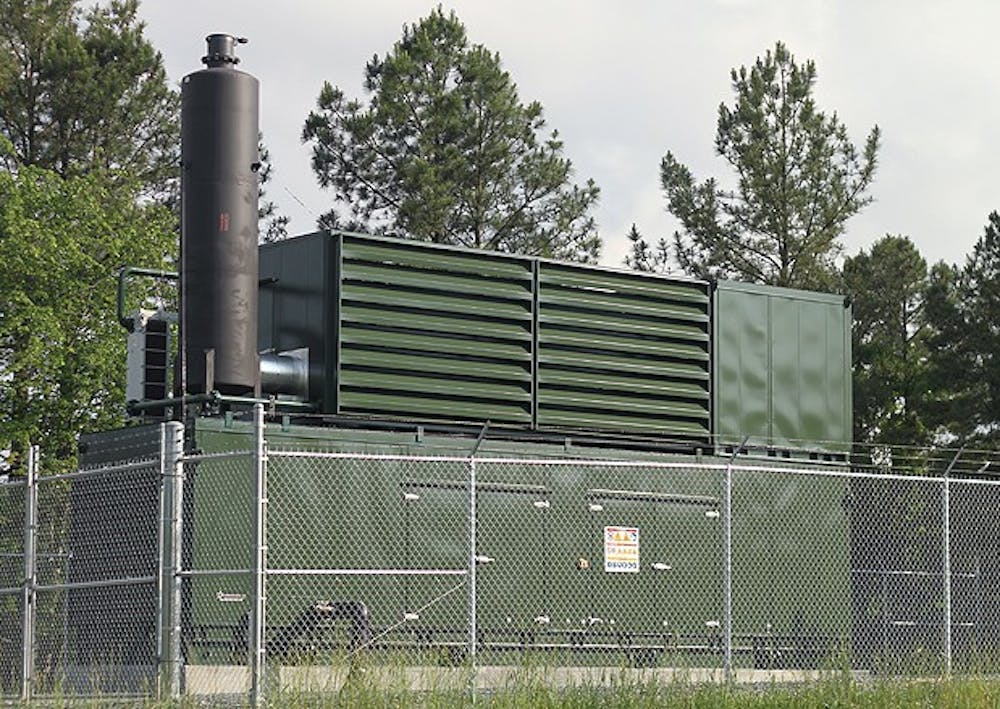The University recently took a big, multimillion dollar step toward its goal of reducing its carbon footprint to zero by 2050 — by converting greenhouse gas to energy.
In 2009, UNC formed an agreement with Orange County that allowed it to purchase the right to the gas produced at the county’s landfill during garbage decomposition.
Now, with the implementation of a new generator, the University can convert that gas into usable energy.
“For a considerable period of time there were county commissioners who wanted to harness the methane gas from the landfill,” said Barry Jacobs, chairman of the Orange County Board of Commissioners.
“We needed a partner. We looked at whether we could use it to power some of our own buildings, and we found that the University, especially as it was thinking about developing Carolina North, had a similar interest.”
Gayle Wilson, the county’s director of solid waste management, said the University installed extracting wells in the county’s operating landfill as well as in the previously closed landfill where garbage is still decomposing.
The gas is collected in a system of pipes and sent to a central location where it is filtered before being sent to a generator on Carolina North’s campus.
Phil Barner, UNC’s director of energy services, said the University currently sells the electricity generated to the Duke Energy power grid. But he said they expect to use it to heat buildings at Carolina North, the mixed-use campus planned to open north of UNC’s main academic campus, once they are built.
Barner said the entire project cost upwards of $5.5 million, and the generator itself — which was shipped to the University from Austria in April — cost a little more than $1 million.



